New York City Snapshot
Imagine you could explore and navigate around a new city without being glued to your phone’s mapping app. NYC-based startup Wear.works is designing and developing Beyond Sight, a wearable device that creates specialized vibrations in order to guide users—including the visually-impaired—through their surroundings without having to rely on screens.
The company has three founders of color who graduated from the Pratt Institute’s Industrial and Product Design programs in 2014 and 2015. The following year, Wear.works received an initial prototyping budget, access to mentorship and support, and other resources to launch their business as one of six fellows of the New York City Economic Development Corporation (NYCEDC)’s Next Top Makers program.
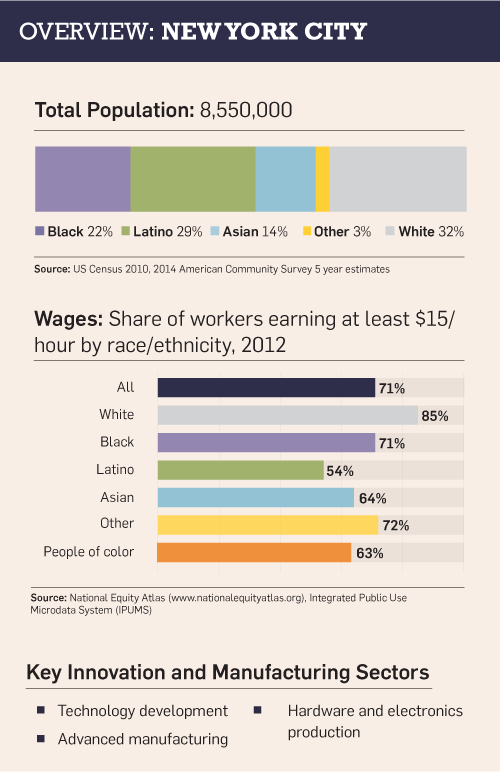 Next Top Makers is one of a handful of programs and services launched by the city in recent years to strengthen its industrial base. Manufacturing and industrial jobs account for 15 percent of the city’s private sector workforce and have been a critical pathway to the middle class for generations. The average salary for an industrial sector job in Brooklyn and Queens is $50,934, more than twice the average salary of $25,416 for retail and service sector jobs.1 People of color make up over 80 percent of New York City’s industrial workforce.2
Next Top Makers is one of a handful of programs and services launched by the city in recent years to strengthen its industrial base. Manufacturing and industrial jobs account for 15 percent of the city’s private sector workforce and have been a critical pathway to the middle class for generations. The average salary for an industrial sector job in Brooklyn and Queens is $50,934, more than twice the average salary of $25,416 for retail and service sector jobs.1 People of color make up over 80 percent of New York City’s industrial workforce.2
However, New York City’s core industrial areas—where the bulk of the city’s 530,000 manufacturing and industrial jobs are located—are under threat by skyrocketing rents, aging infrastructure, and the encroachment of new hotels, storage facilities, and other retail, residential, and commercial uses. In response to these challenges, Mayor Bill de Blasio released a 10-point action plan in fall 2015 that aims to modernize the City’s industrial policy, backed by more than $115 million in city funding. The plan includes a new advanced manufacturing center that will support 3,000 jobs, stronger protections for core industrial land, and new business services, trainings, and grants for manufacturer entrepreneurs.
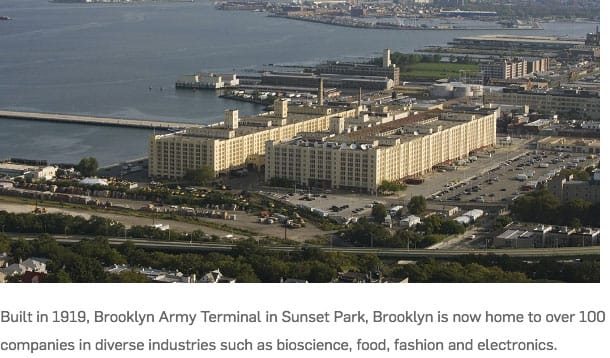
Central to this industrial plan is a commitment to address inequality: “Mayor de Blasio … challenged city government and city agencies to work with him on this broader, bolder vision of thinking about equity,” said Miquela Craytor, Director of Industrial Policy at NYCEDC. “We now have license, ‘to help connect certain neighborhoods that have been left out to our efforts.’”
Measuring Equity and Inclusion
In order to integrate the equity measures into the manufacturing portfolio of the industrial action plan, NYCEDC had to first assemble a measurement and evaluation system that places equity indicators in the context of their programs and goals.
Through their participation in the Equitable Innovation Economies Initiative (EIE) Pilot, NYCEDC has been able to develop indicators that track job opportunities for women and people of color within advanced manufacturing, as well as how awareness about employment and entrepreneurship opportunities circulates through the city’s neighborhoods and affects participation within the field.
“So often our work is about saying, ‘jobs will be created and that’s good.’ But in our EIE work we have been able to go a few degrees beyond that to ask, ‘What kinds of jobs are being created?’ ‘Who is getting these jobs?’ And, ‘Who will have the skills to get those jobs tomorrow?”
MIQUELA CRAYTOR, NEW YORK CITY ECONOMIC DEVELOPMENT CORPORATION
“So often our work is about saying, ‘Jobs will be created and that’s good’,” said Craytor. “But in our EIE work we have been able to go a few degrees beyond that to ask, ‘What kinds of jobs are being created?’ ‘Who is getting these jobs?’ And, ‘Who will have the skills to get those jobs tomorrow?’”
Next Top Makers is one program that has benefited from this focus on who is accessing and benefiting from manufacturing opportunities in the city. The “accelerator-like” program works with six teams of fellows for a seven-month studio phase. It provides the fellows with access to space and equipment and connects them with design, legal, marketing, and business experts and mentors that help them craft a startup plan.
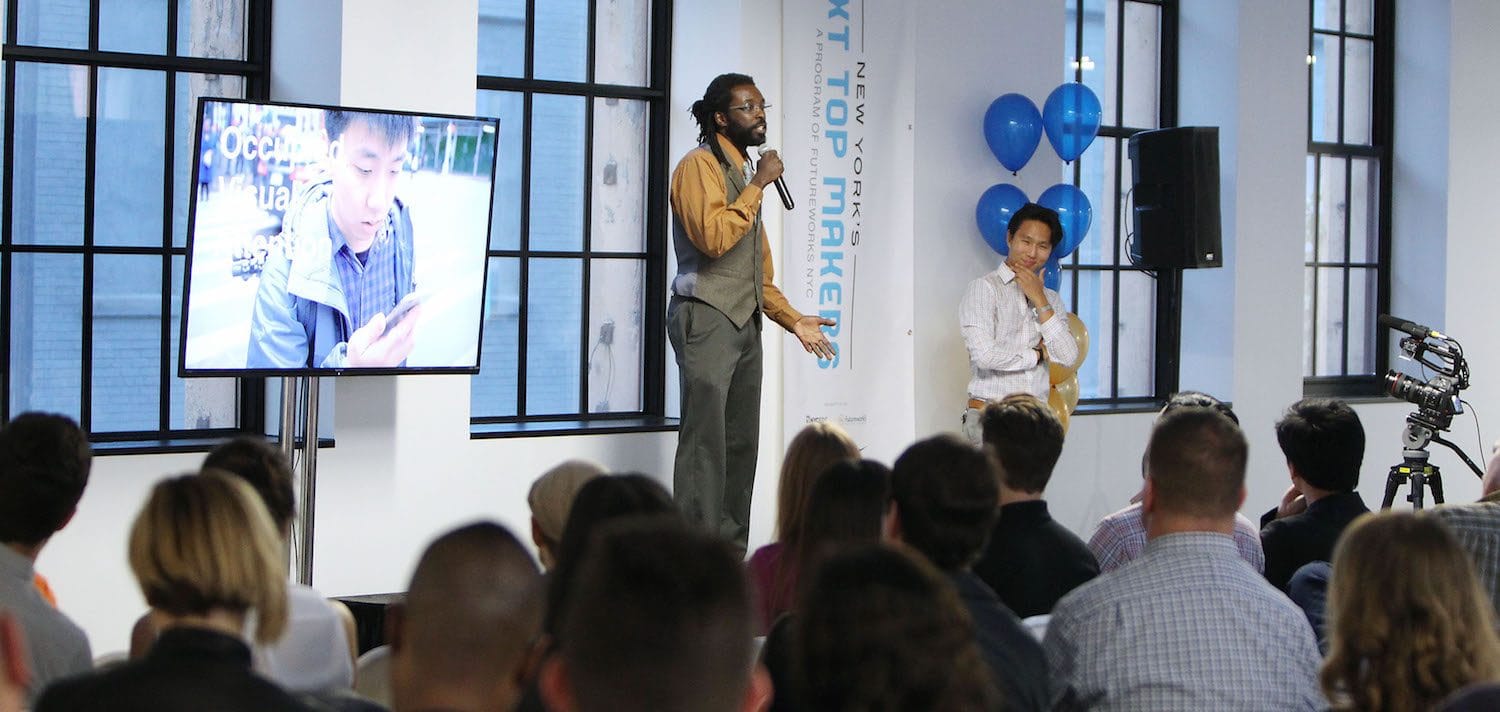
Keith Kirkland, co-founder of Wear.Works, showcases a slick new working prototype that the team finalized for the Next Top Makers showcase event on May 19th, 2016.
“For me, the distinction between Next Top Makers and some accelerators is that it’s not about finding that one, great idea that raises a ton of venture capital,” Craytor said. “The point of the program is to be approachable and have a lot of little successes. [We want to] build up a bunch of sustainable businesses that are going to grow slowly and really plant their roots in this ecosystem and this community.”
As compared to its first year, Next Top Makers has been able to significantly increase the diversity of its fellows in its second year through intentional outreach and program design; while there was only one women founder the first year and no self-identified people of color, 67 percent of the current year’s fellows self-identified as a woman or person of color.
“Finding women and minorities to serve as those role models to the larger community…was the most work that we did, but it seemed to have the most impact, because the people that showed up reflected the people who stood in front of them.”
KATEY METZROTH, SECONDMUSE
In addition to the fellows program, Next Top Makers initiated a public community workshop series for local innovators during this current year. The series focuses on business components like marketing, company formation, legal issues, and designing for manufacturing. There was an intentional recruitment of mentors and workshop facilitators that would reflect Next Top Makers’s equity goals. “It was sometimes really hard to find women and minorities to serve as those role models to the larger community,” said Katey Metzroth of SecondMuse, who serves as Project Lead for Next Top Makers. “I think that was probably the most work that we did, but it seemed to have the most impact, because the people that showed up reflected the people who stood in front of them.” These efforts have paid off; 41 percent of community workshop series mentors were women or people of color, and of the 150 entrepreneurs who attended the series, 55 percent were women or people of color.
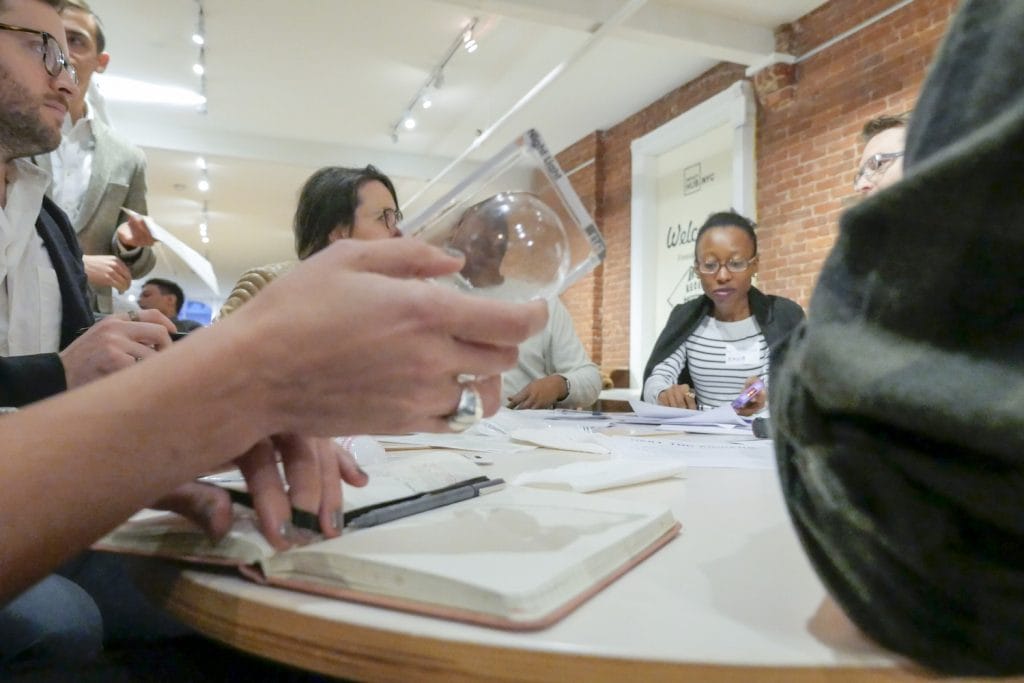
Participants in the April 2016 Design for Manufacturing workshop take apart an everyday object to understand the complexity that goes into making a physical product.
Looking Ahead
Participation in the EIE has helped NYCEDC staff deepen their approach to equity throughout their industrial portfolio of initiatives. Craytor said that hearing about how the EIE team from Portland was not just thinking about diversity in their tech sector, but also about how to apply those principles more broadly through their overall strategic plan was, “reaffirming and a reminder to challenge ourselves to not limit the scope or the scale [of what we are doing].”
The EIE team from San Jose is thinking deeply about existing manufacturers and how they can strengthen the workforce. “That was a reminder to not to lose sight of that important audience,” commented Craytor.
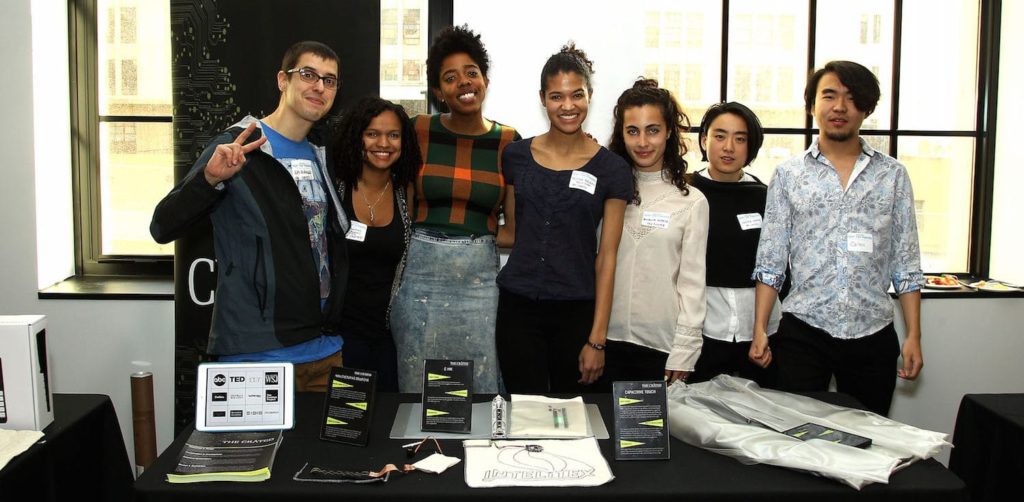
The team from The Crated, a 2015-16 Next Top Maker finalist, present some examples of their work at the Next Top Makers closing showcase. The team specializes in working with companies to integrate technology into textiles with a focus on design and supply chain integration.
Moving forward, NYCEDC will be continuing to scale up and institutionalize their EIE efforts and developing business surveys and measurement tools to track progress in their advanced manufacturing initiatives.
“The entrepreneurs that are showing up at our programs reflect a diverse mix,” said Craytor. “The make-up of these attendees serves an early indicator that our efforts to think more deeply about inclusion and diversity are making some progress. This is really exciting and encouraging as we look to extend the EIE work to the other programs within the Advanced Manufacturing portfolio.”
